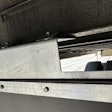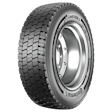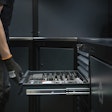The following comes from the April 2016 issue of Truck Parts & Service. To read a digital version of the magazine, please click the image below.
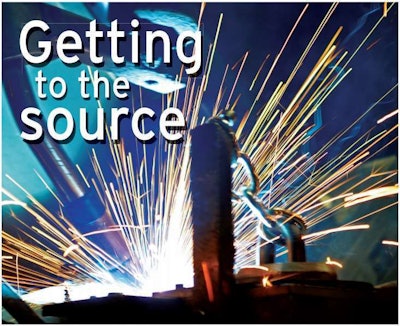
Selling premium, high-quality products is a common differentiator in the aftermarket.
Premium products not only provide customers total cost of ownership benefits, they also offer peace of mind.
But what makes a product “premium”?
Product design and manufacturing process are undeniably important, but to most manufacturers operating in the aftermarket today, the defining characteristic to a premium product is quality raw materials. Even the best engineering can’t make up for low-quality componentry.
As such, North American manufacturers go to great lengths to develop acquisition strategies that allow them to procure the best raw materials possible for their production lines.
In an industry like commercial trucking, there’s no substitute for the best. “We’re in an industry where so many of the parts we buy [and assemble] are truly safety critical,” says James Koller, purchasing manager of commodities at Navistar. “We have to take the purchasing of those materials very seriously, because we know everything we put into a truck affects its final quality and performance.”
Any conversation on raw material sourcing begins with engineering, says Owen Smith, global director of supply chain management at STEMCO.
STEMCO engineers determine “exactly what materials they need” during the design and development of new products, then task Smith’s team with finding the materials before moving to manufacturing.
“They provide us with specific instructions to find materials,” he says.
Navistar’s development process works the same way, says Koller.
“Our design engineers sit down and decide the mechanical properties of a product, and once they’ve [identified] everything they come to us,” he says.
It’s at this point when a manufacturer’s sourcing process formally kicks into gear. Koller says existing suppliers are always Navistar’s first call, and for good reason.
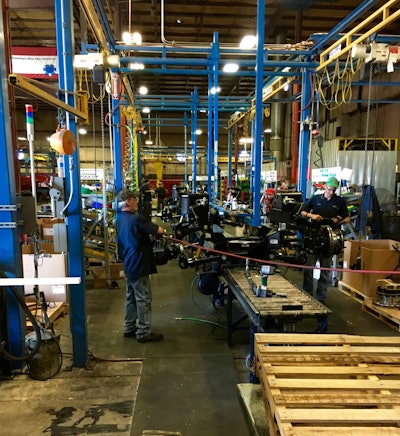 Manufacturers say sourcing decisions are heavily influenced by shipping and acquisition costs. A production line doesn’t run if product arrives late.
Manufacturers say sourcing decisions are heavily influenced by shipping and acquisition costs. A production line doesn’t run if product arrives late.Finalizing a sourcing agreement with a completely new supplier is an arduous process, he says — “it can take up to a year” — and in situations where new materials are needed quickly that much time isn’t always available.
Expanding an existing relationship also dramatically cuts down on the steps in a supplier evaluation, says James Hoenshell, vice president of supply chain at Reyco Granning.
Approved suppliers don’t need to be evaluated on every aspect of their operation because they’ve already proven they can do the job, he says. Instead, they are only required to show they can continue to meet their requirements with another material added to their expected output.
STEMCO operates the same way, Smith says.
“Ideally that’s our first goal” when sourcing a new material, he says. “We prefer to expand an existing relationship with a proven partner supplier.”
More often than not, manufacturers say this step fulfills their ordering needs. “We rarely have to find someone totally new,” says Joe Devany, director of operations at Betts Company.
“I would say at least 80 percent of the time one supplier will have [what we need] or at least know where to send us to find it,” adds Hoenshell.
And that latter point is important, manufacturers note. A supplier’s ability to provide guidance is an invaluable aspect of a supplier-manufacturer relationship, says Tom Meyer, vice president, Engineering and Materials at Hunter Engineering.
“Our partners understand first hand the type of company we strive to be and take that into consideration before ever suggesting a source for Hunter Engineering,” he says. “These channels combined produce a rich field of companies which we can then begin vetting as potential suppliers.”
Only when networking also comes up empty will manufacturers turn to an open search. This is an infrequent step. Smith says “less than 10 percent” of new source searches at STEMCO reach an open evaluation stage, while other manufacturers describe its prevalence as “very rare” and “almost never.”
But when it is done, it is far and away the most exhaustive. Devany says Betts Company has found trade shows and publications as two of the best ways to begin a search for a new supplier. Devany says Betts Company uses both resources to garner options, then turns to the internet to research each business and begin narrowing the playing field.
Hunter Engineering also has found success using that formula, Meyer says.
Being part of a larger entity has helped STEMCO in this area, as its parent company has access to sourcing groups in Europe and Asia that come in handy when tracking down new materials, Smith says.
“They are our eyes and ears in the market and have a pretty extensive vetting process,” he says.
And building a vetting process might be the most important step in creating a procurement plan, manufacturers say.
The best way to avoid sourcing hiccups is avoid any company that poses a risk, says Dave McKean, Navistar vice president of procurement.
A manufacturer is “only as good as their weakest link,” McKean says. “If you don’t put in the time up front [finding a source] in the tail end it’ll end up costing you more money.”
Hoenshell says Reyco Granning uses ISO 9001 certification as its baseline for supplier consideration. “If we determine a supplier doesn’t have that, they aren’t even considered,” he says.
Others manufacturers are faithful to ISO/TS 16949, and some even use both. In addition, manufacturers also each have their own procedures for evaluating possible sources on material quality, production proficiency, safety and delivery performance.
“The idea is to cast a wide net and work down from there,” says McKean.
Using the auto industry’s Production Part Approval Process (PPAP) is a valuable tool in this phase. Meeting PPAP standards means a supplier has proven it can meet manufacturing and quality benchmarks, understands the engineering requirements of a customer order and has demonstrated said manufacturing process that meets expectations at a quoted rate.
Like ISO certification, a PPAP functions as an easy differentiator when looking at a large group of suppliers.
Another valuable elimination technique are supplier questionnaires, which Meyer says help determine if a potential source’s strengths match up with a manufacturer’s needs.
“The potential new vendor needs to have the capabilities that we are looking for, but must also have the proper product mix,” he says. “Going to a low-mix, high-volume vendor is not appropriate if you have high-mix, low-volume parts.”
Questionnaires also can uncover a potential supplier’s relationship with other industry manufacturers. Some manufacturers prefer to avoid relationships with suppliers to competitors when possible.
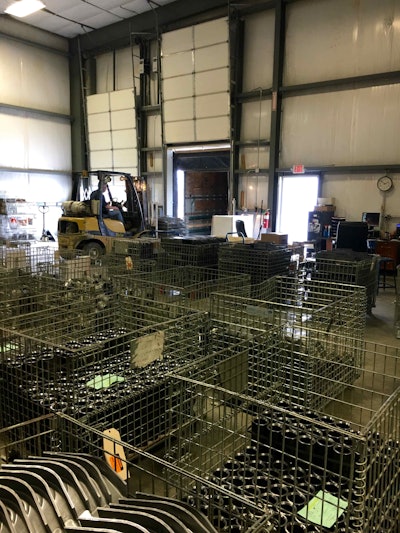 Newly procured raw materials are regularly tested for performance and quality before moving to an assembly line.
Newly procured raw materials are regularly tested for performance and quality before moving to an assembly line.The most common next steps in procurement plans are delivery conversations and facility evaluations. Manufacturer opinions vary on which step comes first, but each is designed to further cull sources until ideally just a handful remain.
Only then do manufacturers talk price. And even then, most pricing conversations focus much more on delivery and acquisition expenses than material costs, McKean says.
“More often than not shipping and logistics expenses will have more variance than materials,” he says. “And we don’t want to have to ship parts everywhere.”
Then it’s time to test product.
Every manufacturer actively tests initial shipments of raw materials against internal requirements and quality metrics provided by a potential supplier. Any discrepancies between the results of the test and supplier promises are then immediately addressed, and further testing is done.
Ideally, this is the step where months of research comes to fruition, Koller says.
“We take things very seriously when we are going to bring a supplier in because we know how important safety is in our products,” he says. “We need to know a supplier can regularly provide us with a quality product.”
Meyer says testing is a manufacturer’s final chance to ensure quality. Inferior raw materials not only can lead to inferior product, but also can damage a manufacturer’s reputation and put customers at risk.
Meyer says those aren’t points to be taken for granted.
Like distributors, a manufacturer’s quality defines its brand.
“Our reputation is at stake on everything we ship to our customers. We have very high standards for ourselves, as our customers do as well,” he says. “We want to provide the highest quality product with an excellent return on investment. If the product doesn’t work as advertised because of quality problems, our customers will shop elsewhere.”


